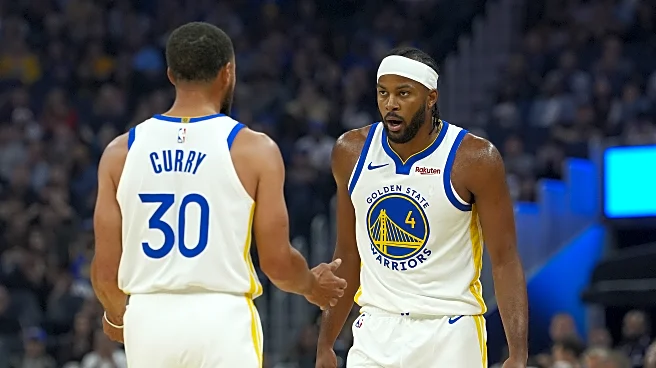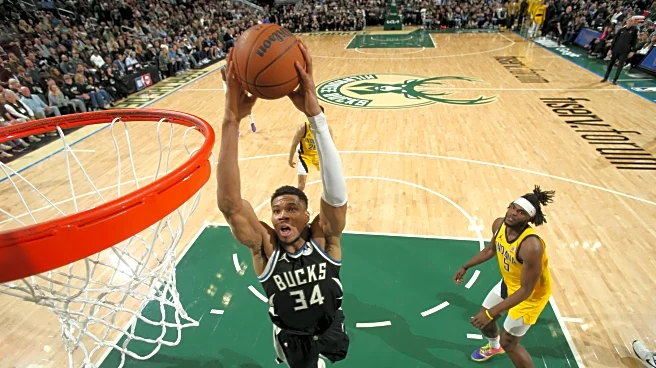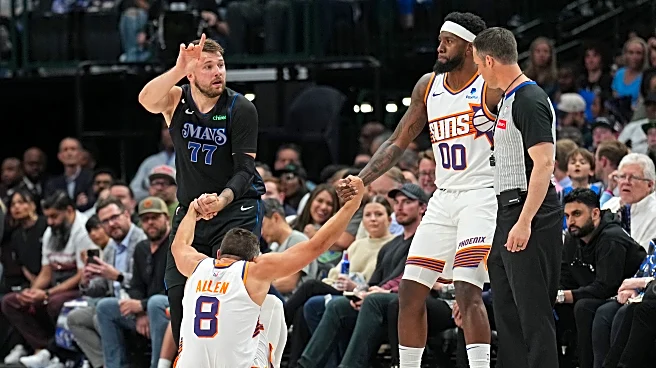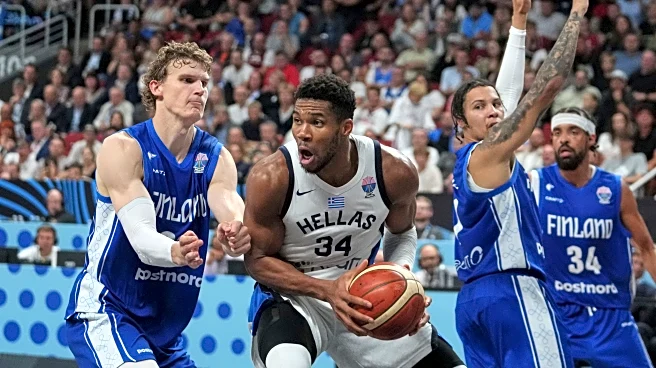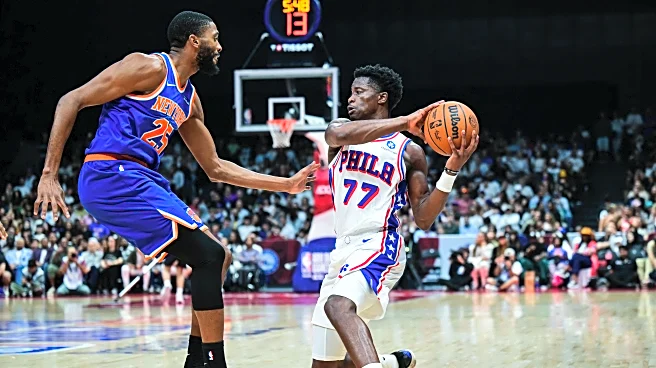What's Happening?
Giannis Antetokounmpo, the Milwaukee Bucks superstar, reportedly considered the New York Knicks as a potential team to play for outside of Milwaukee this offseason. Despite the speculation, Antetokounmpo decided to remain with the Bucks. The idea of winning a championship in New York is appealing to him, according to reports. However, any trade involving the two-time NBA MVP would be complex and unlikely in the near future. Antetokounmpo would need to collaborate with the Bucks on a trade destination or force his way out of Milwaukee to join the Knicks. The Bucks were eliminated in the first round of the playoffs last season, leading to speculation about Antetokounmpo's future.
Why It's Important?
The potential move of Giannis Antetokounmpo to the New York Knicks could significantly alter the NBA landscape. As one of the league's top players, his presence in New York would elevate the Knicks' status as championship contenders. This development highlights the ongoing dynamics of player movement in the NBA, where superstars can shift the balance of power. For the Knicks, acquiring Antetokounmpo would be a major coup, potentially increasing their marketability and fan engagement. Conversely, the Bucks would face challenges in maintaining their competitive edge without their star player.
What's Next?
While a trade is not imminent, the situation remains fluid. The Bucks and Antetokounmpo may need to address his long-term future with the team, especially if playoff disappointments continue. The Knicks, meanwhile, could explore other avenues to strengthen their roster, keeping an eye on any developments regarding Antetokounmpo's availability. NBA fans and analysts will closely monitor any signs of discontent or trade discussions involving the Bucks' star.
Beyond the Headlines
The potential move of a high-profile player like Antetokounmpo raises questions about loyalty and the business aspects of professional sports. It underscores the influence of market size and team success in attracting top talent. Additionally, it reflects the strategic considerations teams must make in balancing star power with long-term team building.

